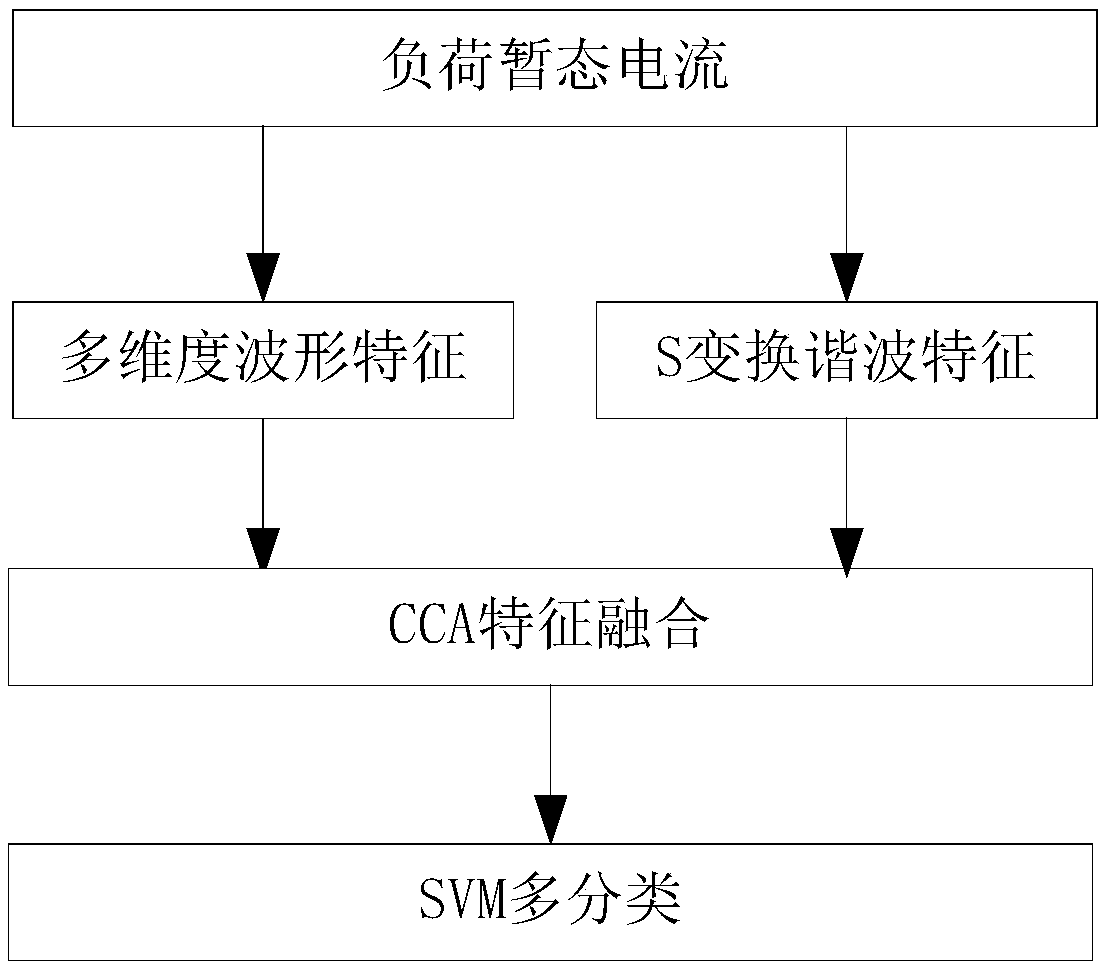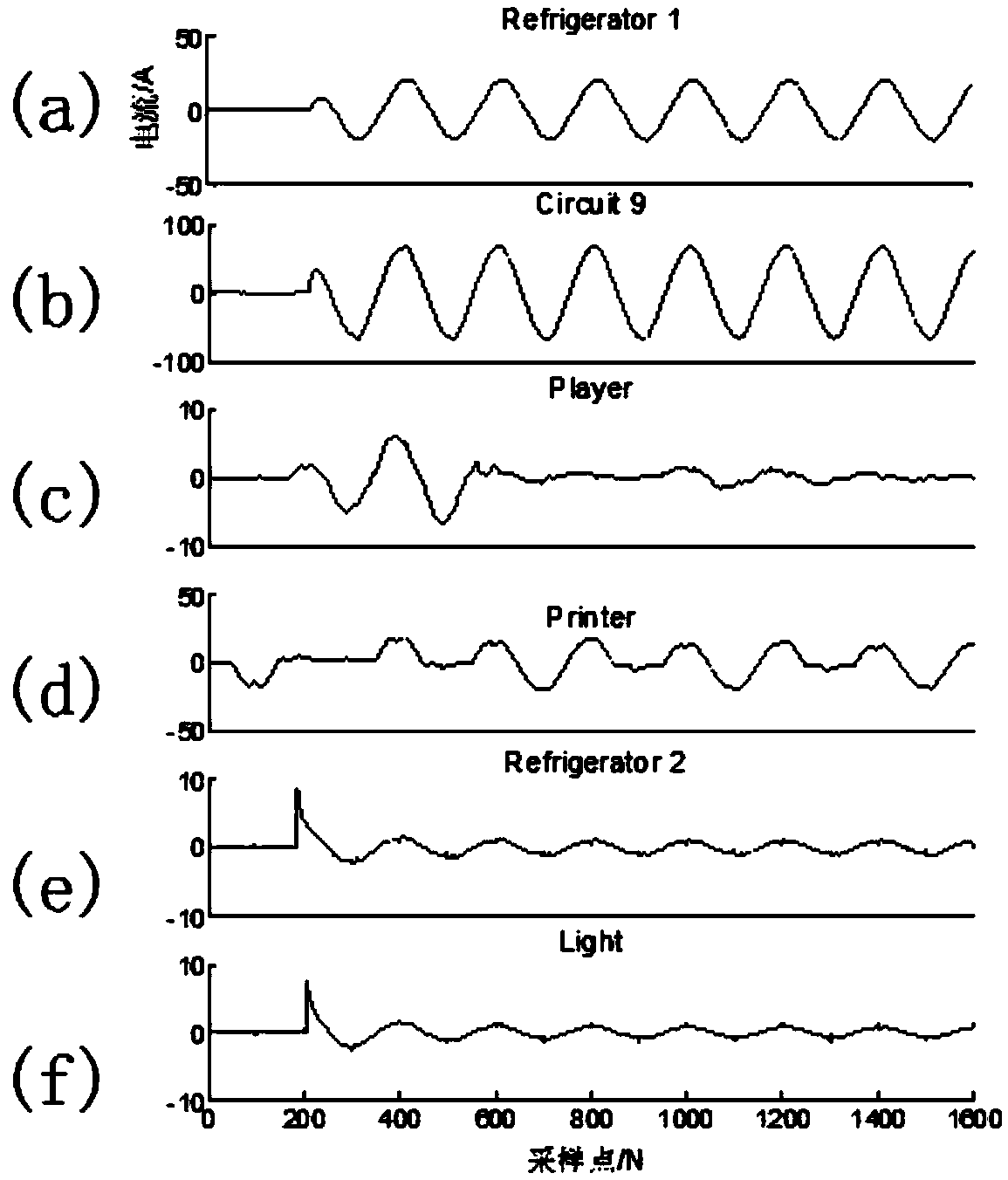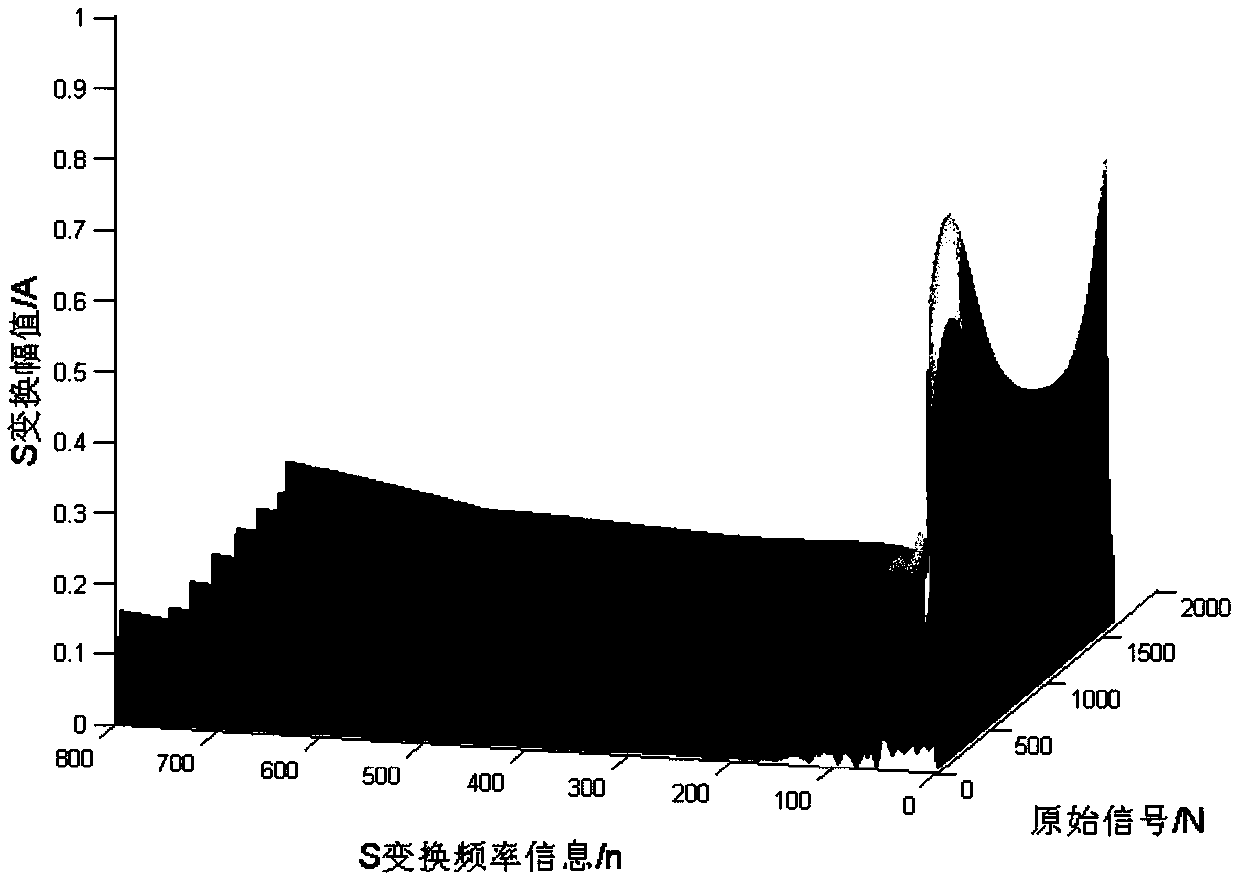Canonical correlation analysis-based non-invasive load identification method
A technology of canonical correlation analysis and load recognition, applied in character and pattern recognition, pattern recognition in signals, measurement devices, etc., can solve the problem of low recognition accuracy of similar loads, achieve good recognition characteristics, good representation ability, and reduce performance. effect of demand
- Summary
- Abstract
- Description
- Claims
- Application Information
AI Technical Summary
Problems solved by technology
Method used
Image
Examples
specific Embodiment
[0092] Specific embodiment: The load on-line decomposition experiment selects the transient currents of 6 types of non-R type loads in the generalized ON event of the BLUED (Building-Level Fully-labeled dataset for Electricity Disaggregation) database as experimental samples, and the total number of samples is 517. Three quarters of each type of samples were randomly selected as the training set, and one quarter was used as the test set, and the experiment was repeated 8 times under the same experimental environment. The Refrigerator2 and Light transient currents in the 6 types of samples are similar, and are used to verify the recognition performance of the feature selection method described in the present invention for similar electrical appliances.
[0093] For load transient currents such as figure 2 As shown, the multi-dimensional waveform features and S-transform harmonic features are respectively extracted, and the S-transform harmonic features are as follows image 3...
PUM
 Login to View More
Login to View More Abstract
Description
Claims
Application Information
 Login to View More
Login to View More - R&D
- Intellectual Property
- Life Sciences
- Materials
- Tech Scout
- Unparalleled Data Quality
- Higher Quality Content
- 60% Fewer Hallucinations
Browse by: Latest US Patents, China's latest patents, Technical Efficacy Thesaurus, Application Domain, Technology Topic, Popular Technical Reports.
© 2025 PatSnap. All rights reserved.Legal|Privacy policy|Modern Slavery Act Transparency Statement|Sitemap|About US| Contact US: help@patsnap.com



